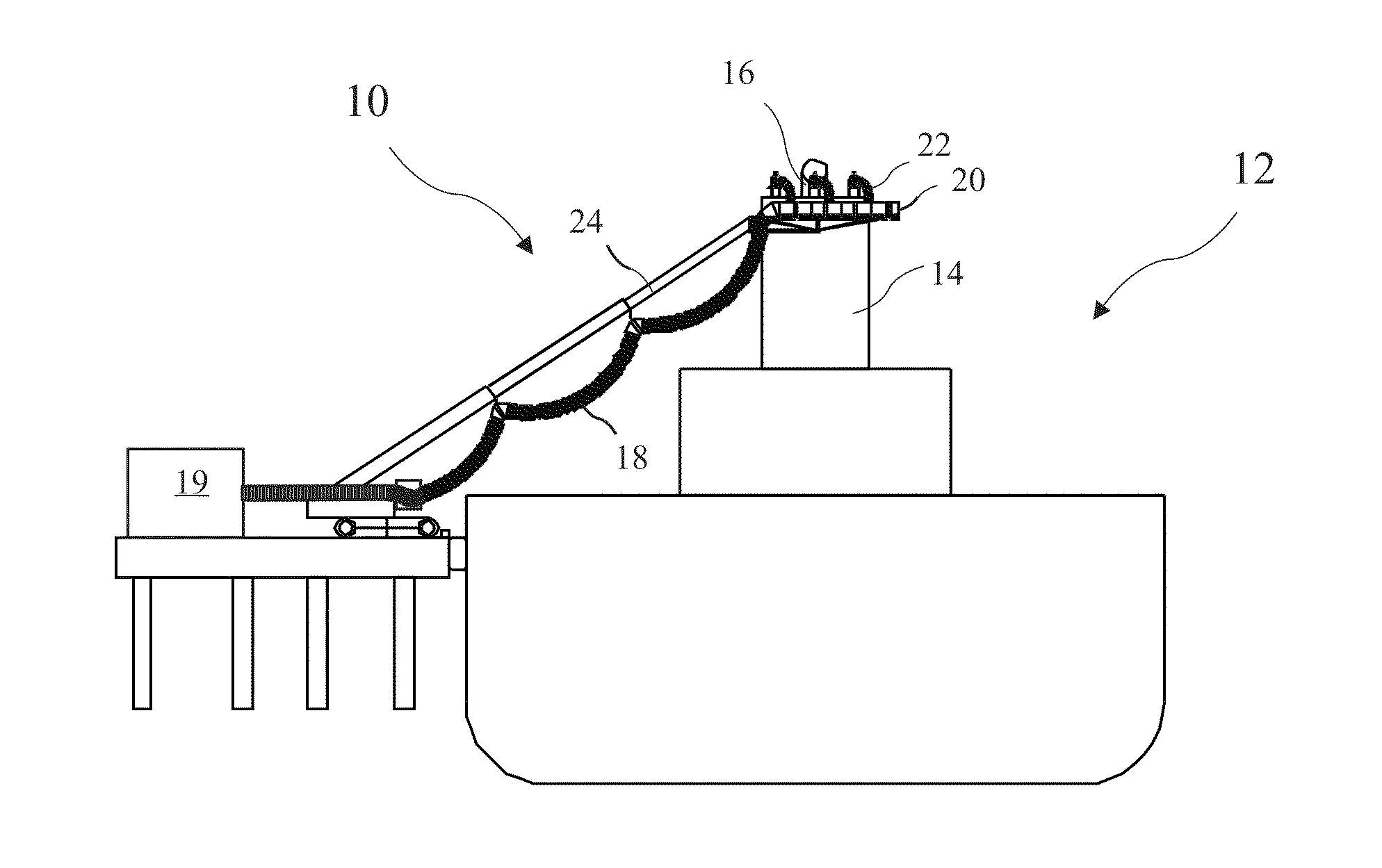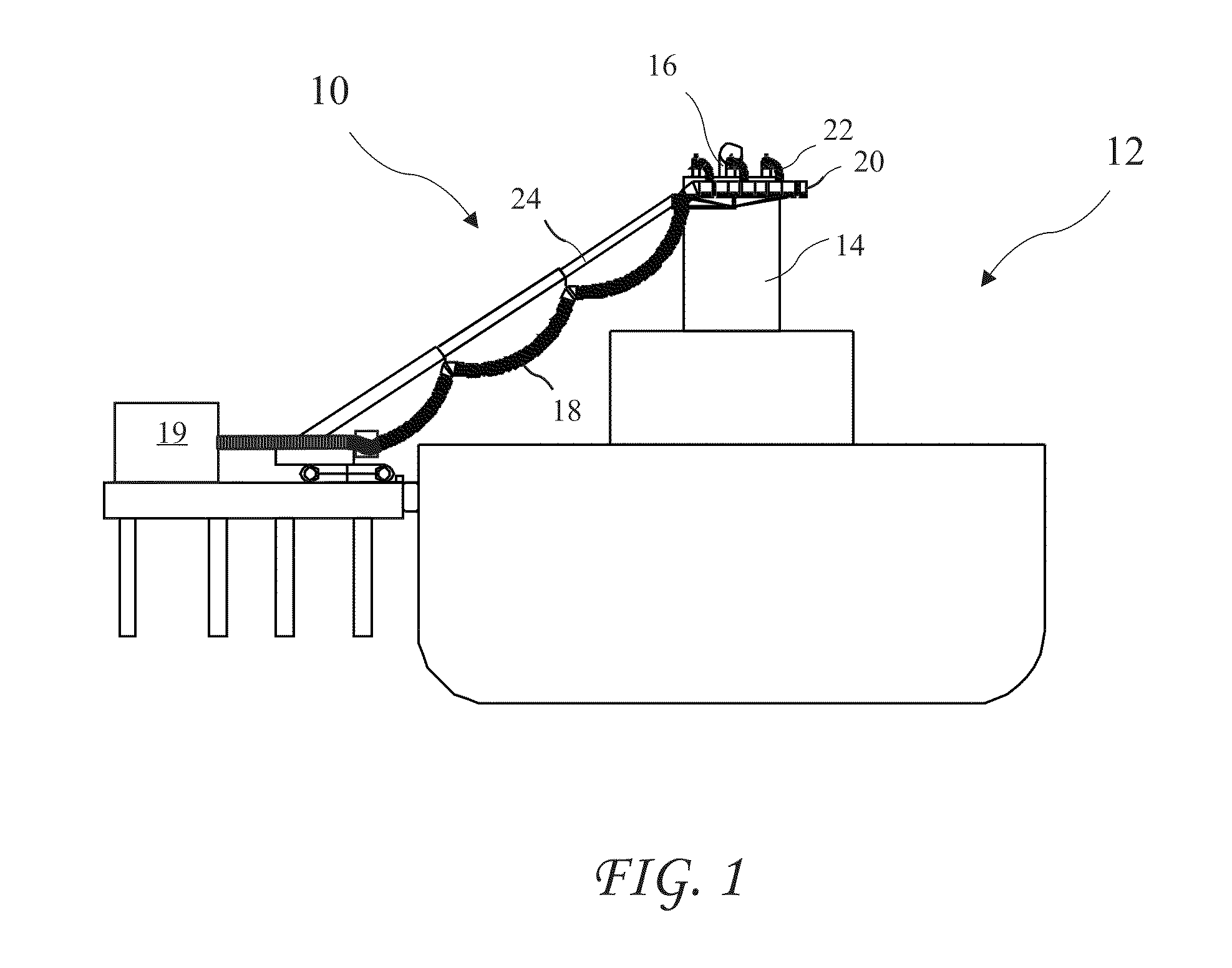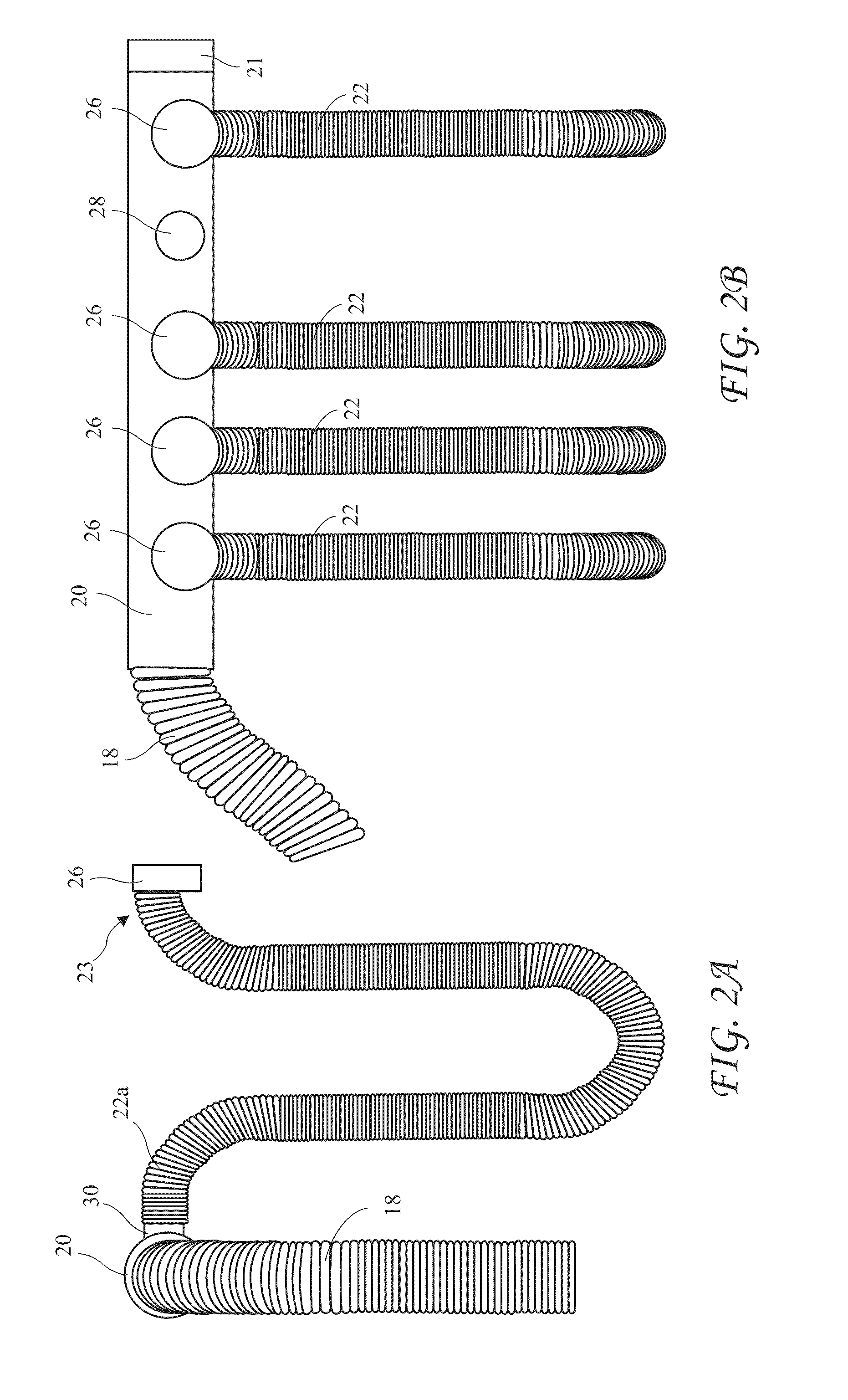Exhaust Gas Capture System for Ocean Going Vessels
a technology for exhaust gas and ocean vessels, which is applied in the direction of marine propulsion, vessel construction, packaged goods type, etc., can solve the problems of difficult or impossible pumping, significant source of air pollution, and difficulty in positioning the bonnet over the ogv stack, so as to achieve the effect of increasing the load and more electricity
- Summary
- Abstract
- Description
- Claims
- Application Information
AI Technical Summary
Benefits of technology
Problems solved by technology
Method used
Image
Examples
first embodiment
[0072]FIG. 7 depicts the end connector (or coupling) 26 comprising a flexible connector (or sock connector) 26a attached to the free end 23 of the flexible duct 22 according to the present invention. One end of the flexible connector 26a is connected to the free end 23 of one of the parallel-flow flexible ducts 22. The opposite end 43 of the flexible connector 26a includes both a lifting handle 42 and an attachment to fit over the OGV exhaust pipe 16. The lifting handle 42 may or may not include a means to open or close the attachment over (or into) the OGV exhaust pipe 16 and / or to secure the flexible connector 26a to the OGV exhaust pipe 16. A sleeve (or flexible connecting portion) 41 extends the length of the flexible connector 26a and a belt (for example a spring) 40 around the sleeve 41 expands radially outward as the connector is pulled over the OGV exhaust pipe 16 by the manipulator arm 32 or other means. Once in place over the OGV exhaust pipe 16, the belt 40 holds the flex...
second embodiment
[0075]FIG. 9A shows the connector comprising an iris-type connector 26b in an open position, and FIG. 9B shows the iris-type connector 26b in a closed position. The iris-type connector 26b is similar to the aperture in some cameras and includes blades 50 which close around the exterior of the OGV exhaust pipe 16 and hold the iris-type connector 26b and thus the parallel-flow flexible duct 22 in place. The iris-type connector 26b may be actuated into the open state by the act of the manipulator 32 picking up one of the parallel-flow flexible duct 22 handles, and actuate the iris-type connector 26b into the closed state over the OGV exhaust pipe 16 by the act of the manipulator arm 32 releasing the lifting handle. The manipulator arm 32 may alternatively actuate the iris-type connector 26b by turning a handle or lifting a lever after the iris-type connector 26b is in place over the OGV exhaust pipe 16, or by other means. The closing actuation may also be accomplished by the manipulato...
third embodiment
[0076]FIG. 10A-10D show front, side, rear, and top views respectively of the connecting device comprising a magnetic connector 26c. The magnetic connector 26c utilizes a ring of permanent magnets 58 which are attracted to and which hold the magnetic connector 26c against a respective one of the OGV exhaust pipes 16. A U-shaped bracket 56 locates the magnetic connector 26c and the ring of magnets 58 in alignment with the OGV exhaust pipe 16 while the magnets 58 are too far away from the OGV exhaust pipe 16 to be attracted to it. The manipulator arm 24 then moves the magnetic connector 26c toward the OGV exhaust pipe 16 until the magnets 58 make contact with the OGV exhaust pipe 16.
[0077]The magnets 58 are in the form of a ring concentric with the flexible duct 22. An upside-down U-shaped yoke 56, held and positioned by the manipulator arm 32, centers the magnetic connector 26c and the parallel-flow flexible duct 22 over the OGV exhaust pipe 16, then the manipulator 32 moves the magne...
PUM
| Property | Measurement | Unit |
|---|---|---|
| diameter | aaaaa | aaaaa |
| length | aaaaa | aaaaa |
| diameter | aaaaa | aaaaa |
Abstract
Description
Claims
Application Information
 Login to View More
Login to View More - R&D
- Intellectual Property
- Life Sciences
- Materials
- Tech Scout
- Unparalleled Data Quality
- Higher Quality Content
- 60% Fewer Hallucinations
Browse by: Latest US Patents, China's latest patents, Technical Efficacy Thesaurus, Application Domain, Technology Topic, Popular Technical Reports.
© 2025 PatSnap. All rights reserved.Legal|Privacy policy|Modern Slavery Act Transparency Statement|Sitemap|About US| Contact US: help@patsnap.com



